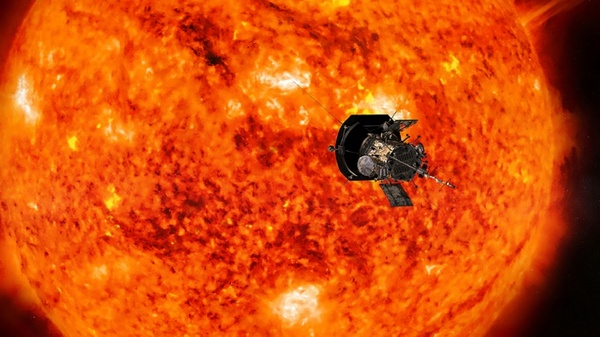
A rendering of NASA’s Parker Solar Probe, the spacecraft that will fly through the Sun’s corona to trace how energy and heat move through the star’s atmosphere. /AFP
NASA on Sunday launched a $1.5 billion spacecraft toward the Sun on a historic mission to protect the Earth by unveiling the mysteries of dangerous solar storms.
“Three, two, one, zero, and liftoff! Of the mighty Delta IV Heavy rocket with NASA’s Parker Solar Probe, a daring mission to shed light on the mysteries of our closest star, the Sun,” said the narrator on NASA TV. The launch lit the night sky at Cape Canaveral, Florida at 3:31 a.m.
Less than an hour later, mission managers confirmed that the spacecraft separated from the rocket as planned and was safely on its journey.
“At this point, spacecraft is up and happy,” said a spokesman with United Launch Alliance, the company that operates the rocket.
The unmanned spacecraft’s mission is to get closer than any human-made object ever to the center of our solar system, plunging into the Sun’s atmosphere, known as the corona, during a seven-year mission.
The probe is guarded by an ultra-powerful heat shield that can endure unprecedented levels of heat, and radiation 500 times that experienced on Earth.
Strange veil
NASA has billed the mission as the first spacecraft to “touch the Sun.”
In reality, it should come within 6.16 million kilometers of the Sun’s surface, close enough to study the curious phenomenon of the solar wind and the Sun’s atmosphere, known as the corona, which is 300 times hotter than its surface.
Disclaimer: The comments uploaded on this site do not necessarily represent or reflect the views of management and owner of Cebudailynews. We reserve the right to exclude comments that we deem to be inconsistent with our editorial standards.
